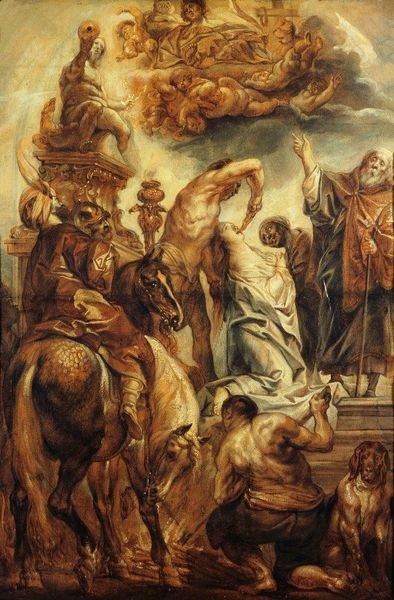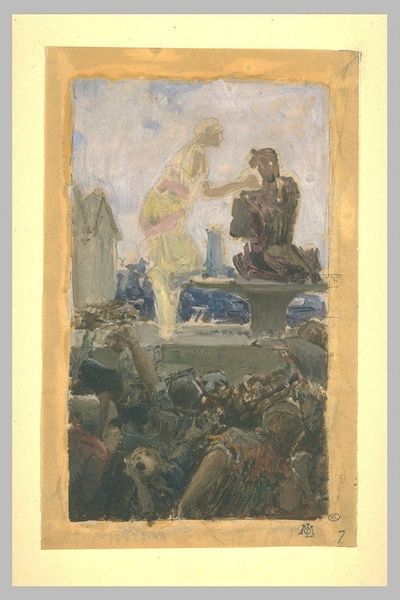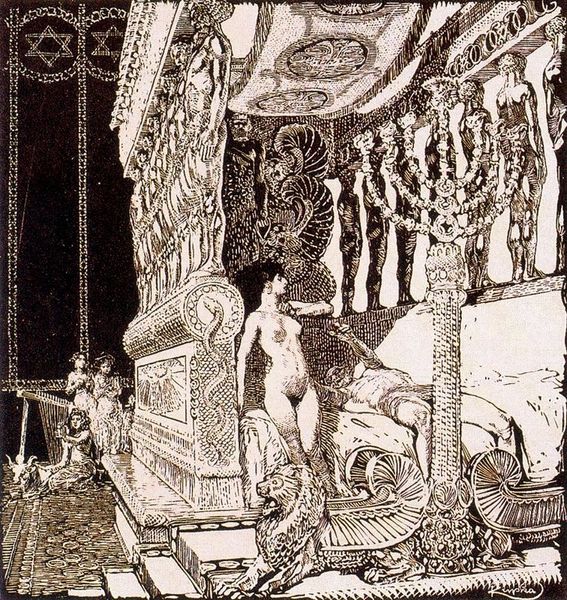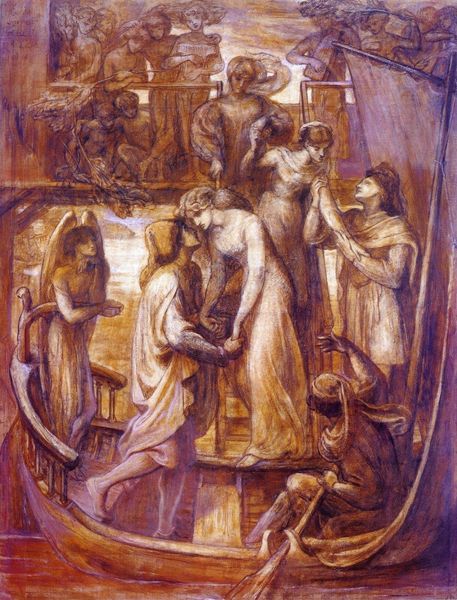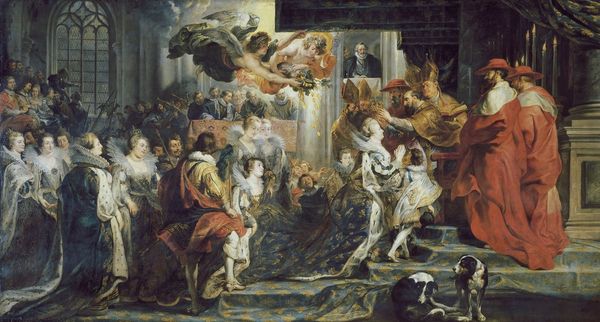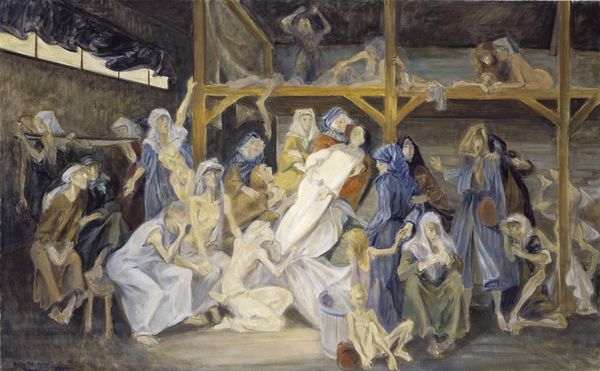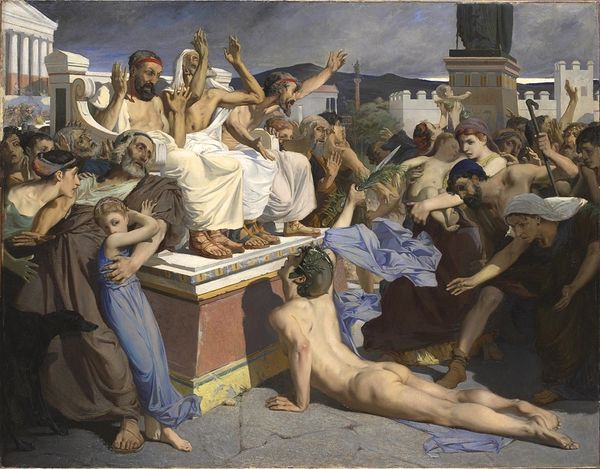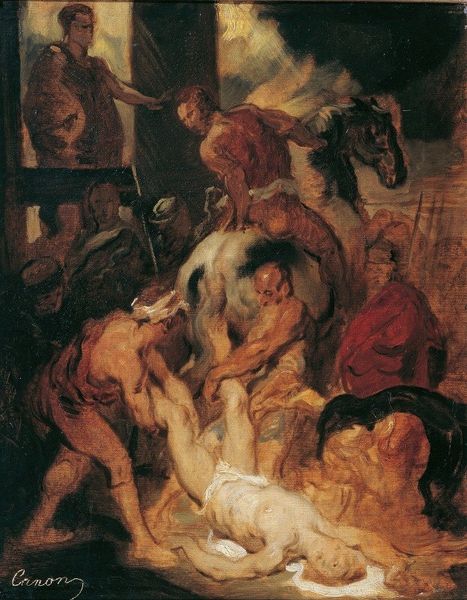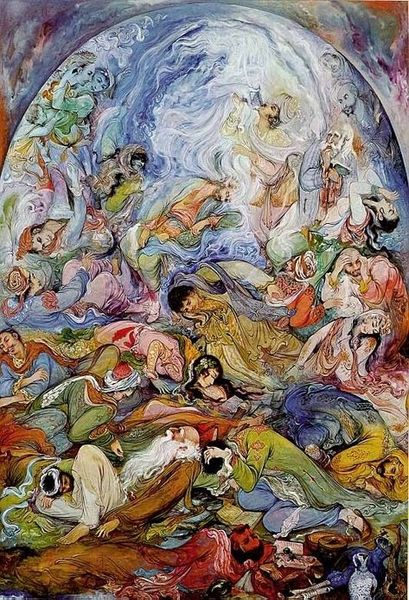
painting, oil-paint
#
narrative-art
#
painting
#
oil-paint
#
figuration
#
oil painting
#
mythology
#
symbolism
#
genre-painting
#
history-painting
#
academic-art
#
expressionist
Copyright: Public domain
Editor: This is Luc-Olivier Merson's "Esmeralda and Quasimodo," an oil painting from 1905. The dramatic tension between the central figures and the frenzied crowd is really striking. What is your interpretation of this work? Curator: The painting brings into sharp focus the dynamics of power and marginalization embedded in Victor Hugo’s novel. Note how Merson positions Esmeralda, a figure of supposed purity, as bestowing mercy on Quasimodo, while the "crowd" writhes below. This performative act begs questions about how societies create "others." Editor: It seems like she’s using her position to show empathy, but what does it mean in the context of that mob? Curator: Precisely. Is this act of kindness revolutionary, or is it a reinforcement of a hierarchical structure? Merson painted this during a period rife with social upheaval; the work is imbued with an understanding of how symbols can both liberate and constrain. What power do you think the crowd possesses? Editor: Maybe it is less about individuals in the crowd but more about collective behavior? Curator: Right. Merson perhaps understood, as many activists today recognize, that liberation involves dismantling systems of oppression. And that individual acts of charity do not necessarily change these underlying power dynamics. Is there any contemporary work this reminds you of? Editor: Now that you mention the dynamics of power, I'm reminded of Kara Walker's silhouettes exploring race and gender… Curator: Merson makes us think about the long durée, the long-term social structures which perpetuate inequalities. He helps us see history not as a sequence of events but as a network of evolving power relations. Editor: That's a really interesting angle to think about, framing individual kindness in the long history of social inequity. Curator: Indeed. It challenges us to consider how we can move beyond symbolic gestures to enact more systemic changes in society.
Comments
No comments
Be the first to comment and join the conversation on the ultimate creative platform.
